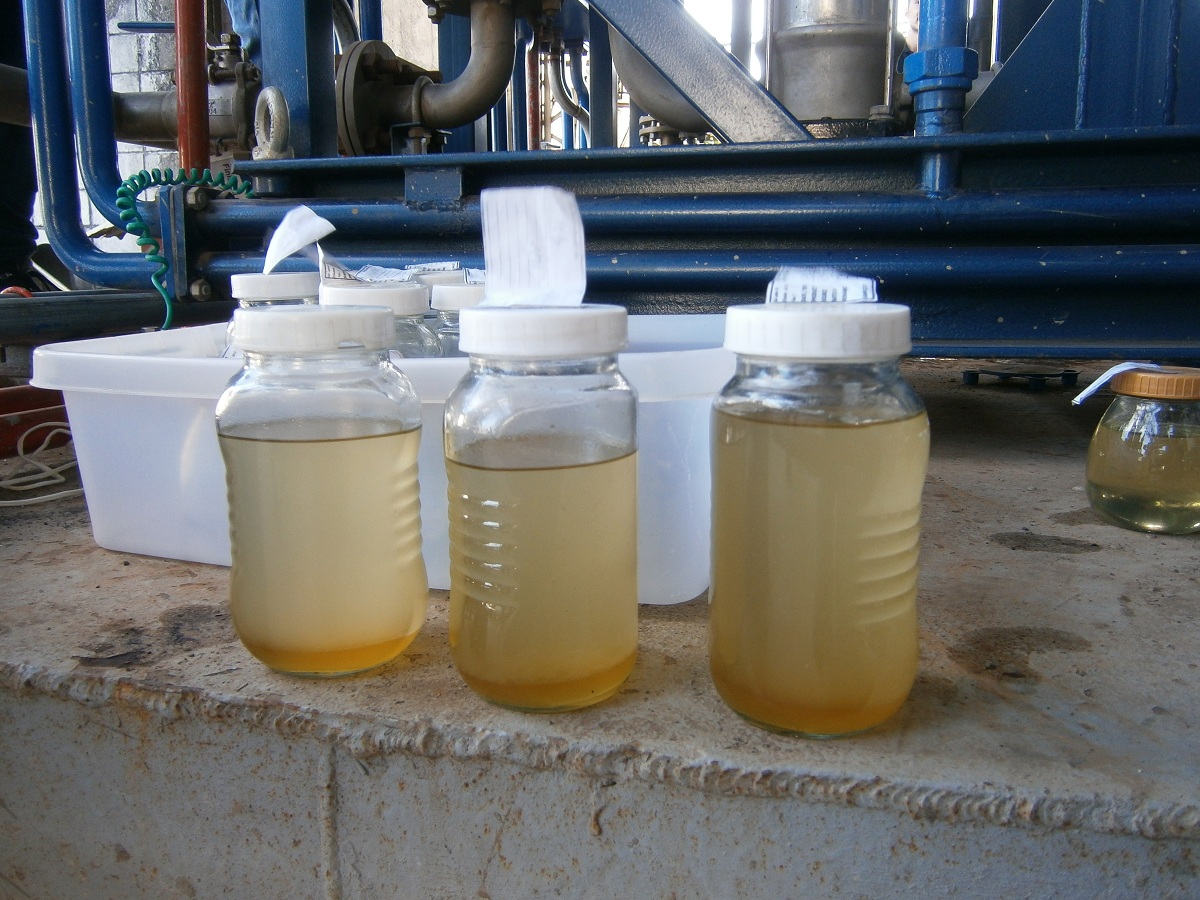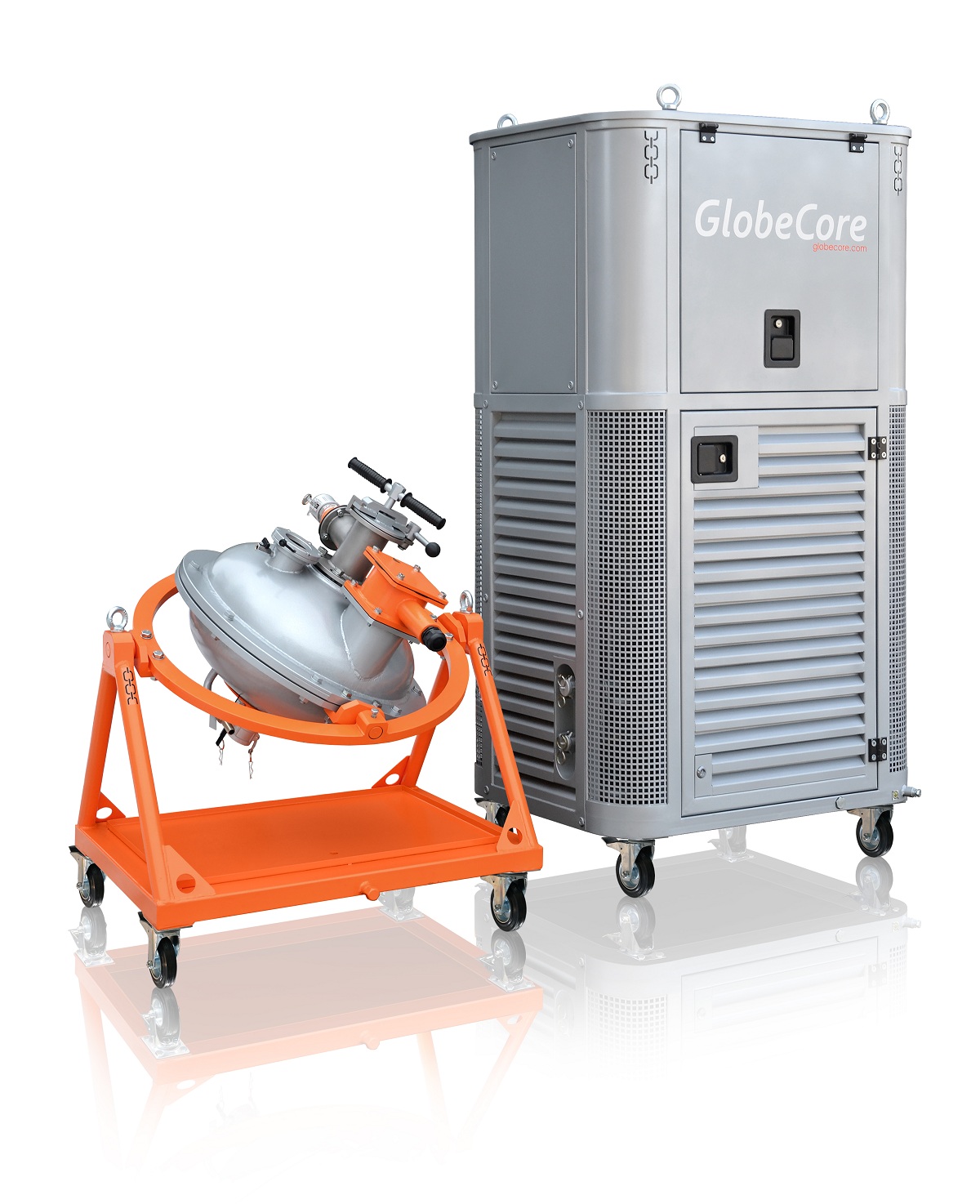The action, motion and energy of the ferromagnetic particles are the decisive influences on the methanolysis process. In turn, these factors are defined by the shape of the particles, their diameter, the ratio of length to diameter, the amount of particles in the chamber and a few other things.
The amount of particles in the operating chamber of a rotating electromagnetic layer device is directly linked to the efficiency of their influence on the reaction mass.
According to theory, the entire layer rotates as a whole. The motion of the particles in a rotating electromagnetic field is possible only up to a certain amount of particles, at which point all particles stop moving.
Large cylindrical particles rotate relative to the axis of the unit, but also move relative ot each other. In other words, the original idea was that the effect of the ferromagnetic particles boiled down to regular mechanical stirring and grinding.
If there are few particles, all of them should move mostly on circular trajectories. If there are a lot of particles, they collide between each other and the walls of the chamber, which causes the particles to turn and tumble, changing their trajectories.
Later experiments revealed new effects, occurring with the steel cylindrical ferromagnetic particles in a rotating electromagnetic field.
The forces and momentum cause the particles to move in a complex manner: forward motion with frequent and sharp changes of velocity and direction and rotational motion with alternating angular speed. Each particle moves independently of the others. Experiments show that the motion begins with the induction in the chamber exceeds 0.09 tesla.
There are two distinct tendencies of motion here. First, the entire layer of particles (due to centrifugal forces) moves at a certain distance from the induction coil axis in the direction of EM field rotation (the induction coil is vertical). Second, the motion of most particles combines the motion along a circle with complex large amplitude oscillations (the amplitude approximates half of the particle length) relative to their centerpoints.
If would seem that local electromagnetic fields are generated around each particle, which change the structure of the magnetic field in the induction coil in a pulsatile manner.
With complex mechanical and magnetostrictive oscillations (due to the delay of the motion relative to EM field rotation, as well as magnetoelastic effect during collisions), each particle becomes a source of cavitation. The processed liquid ingredients (a mixture of vegetable oil and the solution of methanol and base) have a very small compression coefficient, which means that large pressure changes are accompanied by small changes of volume.
The oscillations of the ferromagnetic particles in a fluid generate negative pressures. These negative pressure cause the formation of vapor-filled caverns, which expand and reduce the negative pressure. The continuity of the liquid is disrupted, and it is necessary to define the position of the caverns and the motion of the caverns’ boundaries. The tendency to form caverns in a liquid in idle state shows that in the presence of cavitation cores (microscopic inclusions of air with some vapor), the pressure is reduced to zero.

The pressure created at the boundary of a small spherical bubble due to the interfacial tension, is so high that it cannot be balanced by the vapor pressure, while the air under such pressure should rapidly dissolve in the fluid.
The intensive motion of the particles cause the gas bubbles to almost immediately disperse and fill with saturated vapor of the processed liquid, creating the conditions for acoustic cavitation. Particle motion drives the intensive motion of the fluid, creating the conditions for discontinuity of the fluid, i.e. stream cavitation.
We assume that the process efficiency of the devices with a rotating EM field is due to several factors which influence the processed fluid together:
- the rotating EM field magnetizes the particles, which interact with each other, the fluid and the chamber’s walls;
- acoustic shock waves are generated by the cavitation in the chamber, intensifying mass exchange processes;
- the motion of a large amount of ferromagnetic particles in the induction chamber is accompanied by intensive collisions and release of energy;
- each particle is, in a sense, a mini electrolysis devices, which saturates the chamber with ions, accelerating chemical processes;
- magnetic polarity reversals of the magnetized particles generates magnetostriction. The number of reversals seems to significantly exceed the number of particle collisions. The change of linear dimensions are very rapid. The result is a force impulse. It is probably that each particle radiates strong impulses as it moves, significantly intensifying the chemical and diffusion processes;
- the particles contact each other, forming a short circuit, with strong induced currents and micro-arcs. The released heat also facilitates process intensification and direct diffusion of matter;
- the magnetostriction impulses, cavitation, induced currents and micro-arcs increase the area of interaction (phase boundary) by several orders of magnitude, increasing the “surface energy” and the rate of vegetable oil methanolysis.
All the forces and factors are synergistic and create previously unknown phenomena in the vortex layer devices, improving the efficiency and intensity of the chemical processes.

